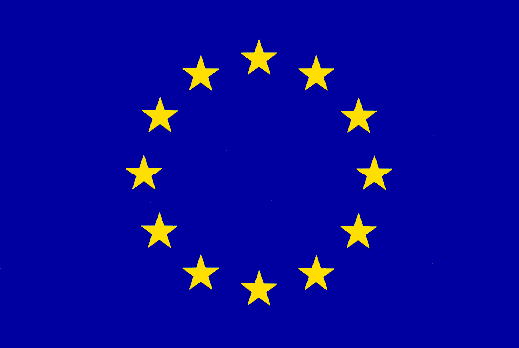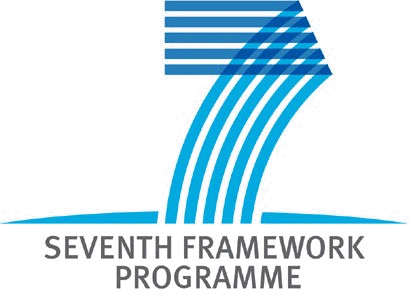The Consortium
This Consortium brings together a diversity of expertise with the know-how to discover, validate and evaluate cancer serum biomarkers based on the aberrant glycosylation of specific glycoproteins that occurs in cancer. The participants include the main laboratory in Europe working on serum biomarkers, laboratories that are world leaders in O-linked glycosylation and glycoproteomics, two biotechnology companies, (one of which is a SME and both of which are experienced in this area) and an expert in pattern recognition to analyse the results. Moreover the Consortium benefits from having an additional SME to manage the project.
Below is a diagrammatic representation of the Consortium’s research skills and how these complementary skills feed into the project objective.
In bringing together this Consortium we have focussed on acquiring the best resources and expertise in Europe. All the participants are internationally recognised in their fields and have connections and collaborations with research groups outside of Europe, especially the US and Japan. Participants 1 and 2 are members of the Functional Glycomics Consortium headed by Professor Jim Paulsen in the US and thus if necessary this proposed EU Consortium has access to the tools techniques and services of the US Consortium. Dr Ola Blixt who is currently the Director of the Glycan Array Synthesis Core (D) of CFG and is responsible for the production of glycan arrays, will be moving to participant’s 2 laboratory (Copenhagen) in Oct. 2007.
What is absolutely key to the success of the project is having serum donated from individuals who are continually followed for the development of subsequent cancers. As the serum is taken from well women, the number of participants needs to be very large in order to have adequate numbers of cancer incidents for mean full analyses. Sera from the UKCTOCS study (202,638 women donated sera) and Guernsey (6,500 women donated sera) constitute such banks.
This Consortium brings together participants (1 and 4) who have access to these unique sera banks. Dr Usha Menon is principal investigator and trial coordinator for the screening trial UKCTOCS which is the largest randomised controlled trial of ovarian cancer screening in the world. Professor Joyce Taylor-Papadimitriou and Dr Joy Burchell have access to the Guernsey serum bank and work closely with Professor Ian Fentiman who has been involved with the Guernsey project since the seventies and was responsible for the collection of the P-series of sera from breast cancer patients.
These sera banks, the P series of breast cancer sera, and the sera provided by Transgene are key to the success of this project and banks will be described more fully in section B2.4 “Resources to be Committed”.
Expertise and role of the participants
The post-translational modification - O-linked glycosylation
Changes in cancer: Dr Burchell and Professor Taylor-Papadimitriou (participant 1) have done seminal work on documenting the changes in glycosylation seen in breast cancer. They have shown that one of the mechanisms responsible for changes in O-linked glycosylation in breast cancer is the dysregulation of glycosyltransferases, being the first to demonstrate an upregulation of ST3Gal-I and the turning on of the transcription of ST6GalNAc-I. Upregulation of ST3Gal-I has subsequently been shown to be a mechanism involved in the aberrant glycosylation of O-linkrf glycoproteins expressed by other cancers. This group was also the first to demonstrate the presence of the MUC1 glycoprotein in the sera of breast cancer patients. As well as their role in providing sera from the Guernsey bank (see above) participant 1 will carry out the discovery glycopeptide microarray screening.
In vitro glycosylation of peptides: Professor Clausen (participant 2) is a world leader in research into glycosyltransferases, particularly polypeptide GalNAc transferases and is a pioneer in the field of enzymatic glycosylation of peptides. His group have identified and characterised 10 of the glycosyltransferases involved in O-linked glycosylation including 5 isoforms of polypeptide GalNAc-transferases. Professor David and Dr Reis (participant 7) are also highly experienced in in vitro glycosylation of peptides. Both of these partners will be involved in the production of glycopeptides for the fabrication of the microarrays by participant 6 and for the production of monoclonal antibodies to O-PTM MUC16 and discovered novel glycoproteins.
Glycoproteomics: Dr Schwientek (Participant 5) has developed standard procedures for human body fluid protein partitioning and glycoproteomics based on serial lectin affinity chromatography (SLAC) in the bioanalytics core facility of the multidisciplinary medical research centre ZMMK Cologne. Proteome partitioning and enrichment of low abundant O-PTM proteins by SLAC of sera provided by participants 1 and 4 will be performed by participant 5. O-PTM enriched samples will be analysed by participants 5 and 6 .The Central Bioanalytics (ZBA) core will be responsible for routine 2-DE based proteomic analyses and these will include fully automated spot picking (Bruker Proteineer SP Robot), in-gel digestion, and target application (Bruker Proteineer DP) for protein identification by PMF (Bruker Reflex II MALDI-MS). Coverage and sensitivity of the alternative proteomic strategy via 1-DE and nano-LC (LC-Packings Ultimate) coupled to ESI-MS/MS (Micromass QTOF2) will benefit from the availability of the ABI4700 MALDI-TOF/TOF proteomics analyser for improved offline analyses by participant 7. 2-D LC liquid phase glycoproteomics will be performed on the automated Beckman Coulter PF2D system provided by participant 6 and Tn-, STn-, and T-antigen positive fractions analysed by nLC-coupled ESI-MS/MS (participant 5) and offline MALDI-MS/MS (participant 7).
The targeted proteomics workflow of WP3 relies on monoclonal antibodies to the Tn-, STn-, and T-antigen, which exhibit outstanding specificity and provide unique tools for O-PTM detection and analysis. Participant 2 is a leading expert for development and application of these mAbs and will provide sets of purified anti-Tn, anti-STn, and anti–T antibodies to participants 5 and 7.
Glycopeptide arrays
Design, optimisation and fabrication: Participant 2 will be responsible for the design and optimisation of the glycopeptide arrays. As well as the labs expertise in the in vitro glycosylation of pepides (see above), the group has developed microarray printing of glycopeptides in collaboration with Ola Blixt, San Diego, USA. Dr Blixt who is one of the pioneers of glycan arrays join participant’s 2 group in Autumn 2007 and so will bring his unique expertise to the project.
Partner 6, Thymed is an SME that performs comprehensive immune system testing (immune monitoring etc) as a service to pharma and biotech companies. They have recently purchased a robotic contact microarray printer and so are ideally placed to fabricate the glycopeptides arrays.
Screening of glycopepeptide arrays for serum auto-antibodies that can be used as a biomarker for the early detection of cancer: The glycopeptides arrays will be screened with the discovery set of sera (defined in workpage 1) for an early diagnostic auto-antibody signature in the laboratory of participant 1. This laboratory is experience in with working with micro-arrays and is equipped with a Perkin Elmer ProScan Array reader.
The validation sera set will be screened in the laboratory of participant 4, which is a clinical laboratory that has a UK Clinical Pathology Accreditation. This will ensure that the assay will functional in such a clinical setting and will aide in its transition to clinical use.
Participant 9, Professor Gammerman of the Computer Learning Research Centre (CLRC) at Royal Holloway is a world leader in developing predictive learning algorithms and programs and will be mainly involved with his colleagues (Prof.V.Vovk and Dr.Z.Luo) into the analysis of mass spectrometry and arrays data.
Development of monoclonal antibodies and ELISA assays
Monoclonal antibodies: Participants 1 and 2 have a long history in the successful generation of monoclonal antibodies (see above). Participant 2 has already generated antibodies specific for a combined tumour associated glycan and the peptide core of MUC1. He is therefore ideally placed and has all the expertise to generate antibodies to O-PTM MUC16 and the aberrant glycoforms of novel glycoproteins discovered in the glycoproteomics activity. Participant 2 will also perform the initial development of the ELISAs using his antibodies to O-PTM MUC1 and the ones that will be developed to O-PTM MUC16.
ELISAs: Participant 3, TRANSGENE is a biopharmaceutical company created in 1979, employing 160 people and is dedicated to the discovery and development of gene therapy products, and are active in immunotherapeutic clinical trials where immune assays are routinely performed. They have a Quality Control Development Department that has previously been involved in the validation of ELISA assays and so are ideally placed to validate the ELISA assays.
Evaluation of O-PTM MUC1 and O-PTM MUC16 ELISAs
In the early detection of selected cancer and prognosis of breast cancer: The SME, participant 6 who is experienced in performing immunological assays will perform the O-PTM MUC1 ELISA and O-PTM MUC16 ELISA to determine if they have any value for the early detection of breast, ovarian, lung and pancreatic cancer using the sera supplied by participants 4 and 1.
Participant 6 will also screen the P-series of sera from breast cancer patients supplied by participant 1 in the O-PTM MUC1 ELISA to determine if the assay has any prognostic value in breast cancer.
Monitoring patients’ response to treatment: Participant 3, Transgene has an extensive programme of clinical trials and will use sera from breast and lung cancer patients enrolled in Transgene’s Phase II Cancer Vaccines clinical trials programme to investigate the efficacy of the O-PTM MUC1 ELISA in monitoring patients’ response to therapy. All pattern recognition and bioinformatics analyses of the mass spectrometry and microarrays results will be performed by participant 9. All statistical analyses of the results will be performed in each individual WP when it is required.
The involvement of SMEs
-
Two biotechnology companies are actively involved in the RTD activities of this proposal. One, Thymed (participant 6) is a small SME who will be responsible for the fabrication of the arrays and some of the evaluation of the ELISA assays. The second, Transgene employs only 160 staff but it is technically not an SME as it is 51% owned by the large biopharmaceutical company Biomerieux. They will be involved in the coding and aliquoting the sera and in validating and evaluating the ELISA assays.
- Another SME, ANTIGONE will be responsible for the management of the project. Their involvement will ensure the smooth running of the grant and will allow the efficient interaction between the scientific management and the administrative management

